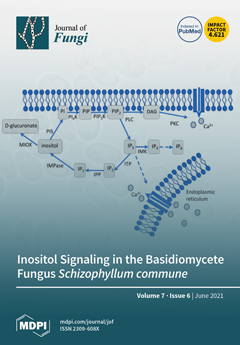Hyphodontia sensu lato, belonging to
Hymenochaetales, accommodates corticioid wood-inhabiting basidiomycetous fungi with resupinate basidiocarps and diverse hymenophoral characters. Species diversity of
Hyphodontia sensu lato has been extensively explored worldwide, but in previous studies the six accepted genera in
Hyphodontia sensu lato, viz.
Fasciodontia,
Hastodontia,
Hyphodontia,
Kneiffiella,
Lyomyces and
Xylodon were not all strongly supported from a phylogenetic perspective. Moreover, the relationships among these six genera in
Hyphodontia sensu lato and other lineages within
Hymenochaetales are not clear. In this study, we performed comprehensive phylogenetic analyses on the basis of multiple loci. For the first time, the independence of each of the six genera receives strong phylogenetic support. The six genera are separated in four clades within
Hymenochaetales:
Fasciodontia,
Lyomyces and
Xylodon are accepted as members of a previously known family
Schizoporaceae,
Kneiffiella and
Hyphodontia are, respectively, placed in two monotypic families, viz. a previous name
Chaetoporellaceae and a newly introduced name
Hyphodontiaceae, and
Hastodontia is considered to be a genus with an uncertain taxonomic position at the family rank within
Hymenochaetales. The three families emerged between 61.51 and 195.87 million years ago. Compared to other families in the
Hymenochaetales, these ages are more or less similar to those of
Coltriciaceae,
Hymenochaetaceae and
Oxyporaceae, but much older than those of the two families
Neoantrodiellaceae and
Nigrofomitaceae. In regard to species, two, one, three and 10 species are newly described from
Hyphodontia,
Kneiffiella,
Lyomyces and
Xylodon, respectively. The taxonomic status of additional 30 species names from these four genera is briefly discussed; an epitype is designated for
X. australis. The resupinate habit and poroid hymenophoral configuration were evaluated as the ancestral state of basidiocarps within
Hymenochaetales. The resupinate habit mainly remains, while the hymenophoral configuration mainly evolves to the grandinioid-odontioid state and also back to the poroid state at the family level. Generally, a taxonomic framework for
Hymenochaetales with an emphasis on members belonging to
Hyphodontia sensu lato is constructed, and trait evolution of basidiocarps within
Hymenochaetales is revealed accordingly.
Full article






